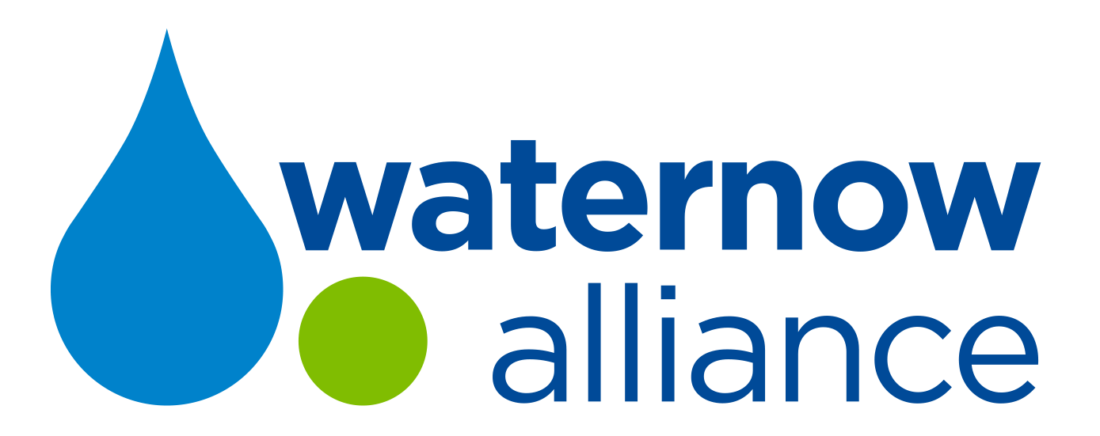By: Caroline Koch and Rebecca Aicher
Data that illustrates green stormwater infrastructure’s benefits can advance adoption of more sustainable solutions to manage urban stormwater runoff and flooding. Insights from green stormwater infrastructure (GSI) leaders and practitioners in Tucson, New Orleans, Chicago, Pittsburgh, and Philadelphia on WaterNow’s recent webinar with the AAAS Center for Scientific Evidence in Public Issues (AAAS EPI Center) provided practical and inspirational ways other cities and stormwater managers can navigate data and implementation challenges.
TL;DR - Our panelists’ advice for deploying GSI:
- If you’re just getting started, give yourself room to be flexible while eventually working to develop standards to make your work scalable and sustainable over time.
- Consider how to ensure implementation of green infrastructure is equitable.
- Get started with pilot projects and try things out on a small scale in order to learn.
- Prepare to gather GSI data from initial projects to support further development.
- Set clear goals and metrics and educate the public about the long-term and workforce benefits of GSI. Create an economy around green and talk about it!
- Learn from other cities’ GSI programs and established methods, and rely on peers in other areas who can share expertise.
- Collaborate with other agencies and private enterprise that will benefit from GSI. They may provide additional data, insights and goals.
- Strong projects are built through close partnerships with people in the community. Community members can help overcome and address barriers that arise.
- Measure and communicate immediate and long-term benefits to the community beyond water management such as jobs created for residents, access to outdoor spaces for physical activity, recreational use, and increased tree canopy to reduce heat vulnerability.
To dig in, GSI has taken diverse, responsive forms for these communities. Jessica Brooks, Director of Philadelphia Water Department’s Green Stormwater Infrastructure Unit, shared that Philadelphia is working toward “greening” 10,000 acres through green infrastructure installed on both public and private property over the next 25 years. PWD takes a “What, Where, How” approach driven not only by managing urban stormwater runoff but also by how the community benefits from the projects on a day to day basis. So far, Philadelphia finds that these systems mostly outperform the expectations.
Moving west, as City Councilmember and ALCOSAN Board Chair Corey O’Connor explained, Pittsburgh’s GSI programs, including the GROW Program, mean green workforce development and new jobs driven by sustainability for the region. For Chicago, Commissioner Kimberly Du Buclet of the Metropolitan Water Reclamation District of Greater Chicago highlighted how MWRD partners with schools to build green infrastructure on playgrounds in low-income neighborhoods through the utility’s Space to Grow program. MWRD measures the success of these projects through quantitative and qualitative metrics: gallons of stormwater captured -- 5 million gallons per storm across 34 playgrounds installed to date -- and the use of the playground by the community. The program also provides education opportunities for students and the school community. New Orleans’ key GSI driver is flooding, an urgent challenge the city is working to tackle.
Tyler Antrup, the Sewerage and Water Board of New Orleans’ Director of Planning & Strategy emphasized the need for a data driven and methodical approach, which ensures good policy, combined with a flexible application that leaves room for innovation and adjustment along the way. In contrast with New Orleans, Tucson’s GSI driver is too little water. James MacAdam, Tucson Water’s Public Information and Conservation Superintendent oversees the city’s new fund to build and maintain GSI throughout the city. Given their parallel objectives to respond to climate change impacts and green the community, tree canopy datasets as well as data about vulnerable populations and heat-related illnesses played important roles in the program’s development.
Webinar participants and panelists also provided feedback on what GSI data and information they need going forward. Not surprisingly, responses to our flash polls demonstrate an “all of the above” need for quantitative data supporting GSI design, guidance on operation and maintenance, and ways to assess cost-effectiveness when compared with grey options as well as triple bottom line benefits.
Bringing this scientific and economic evidence to policy makers and stormwater managers is a goal of the AAAS EPI Center. Webinars such as this are one way the AAAS EPI Center is engaging practitioners to understand what kinds of evidence will help communities evaluate and understand the benefits of GSI. Additionally, the AAAS EPI Center is working to support communities in learning from one another about GSI successes, opportunities, and challenges.
In the spirit of heeding our panelists’ advice to share knowledge and forge partnerships, we encourage you to check out the webinar recording and get in touch with us to share your GSI challenges or lessons learned.

